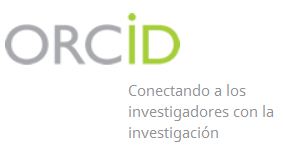Estrategia de capacitación para los recursos humanos en los servicios ópticos
Palabras clave:
estrategia, capacitación, recursos humanos, servicios ópticos.Resumen
Introducción: El desarrollo constante en la actualización de conocimientos y habilidades del personal en los servicios ópticos, son fundamentales para enfrentar los retos que conlleva la prestación de servicios en un contexto de avances tecnológicos y cambios en las necesidades del paciente.
Objetivo: Diseñar una estrategia de capacitación para el mejoramiento del desempeño profesional de los recursos humanos en los servicios ópticos en la Empresa Provincial de Servicios Ópticos de La Habana.
Métodos: Se realizó una investigación de desarrollo e innovación en el campo de la educación médica en la Empresa Provincial de Servicios Ópticos de La Habana, desde enero hasta diciembre de 2022. Tuvo dos etapas: caracterización del nivel de conocimientos, habilidades y actitudes de los tecnólogos en optometría y óptica, y diseño de la estrategia. La muestra estuvo constituida por 34 tecnólogos y 16 directivos seleccionados de manera intencional, quienes dieron su consentimiento para participar en el estudio. Se emplearon métodos teóricos y empíricos.
Resultados: La estrategia se estructuró en fundamentación, objetivo, características y cuatro etapas: diagnóstico, planeación, ejecución y evaluación.
Conclusiones: El diseño de una estrategia de capacitación para el mejoramiento del desempeño de los tecnólogos en optometría y óptica, estructurada en etapas, con sus correspondientes objetivos y acciones, favoreció su implementación en la práctica profesional, al contribuir al mejoramiento del desempeño y la actualización de habilidades y conocimientos de estos profesionales.
Descargas
Descargas
Publicado
Cómo citar
Número
Sección
Licencia
Los autores conservan todos los derechos sobre sus obras, las cuales pueden reproducir y distribuir siempre y cuando citen la fuente primaria de publicación.
La revista se encuentra sujeta bajo la Licencia Creative Commons Atribución-No Comercial 4.0 Internacional (CC BY-NC 4.0) y sigue el modelo de publicación de SciELO Publishing Schema (SciELO PS) para la publicación en formato XML.
Usted es libre de:
- Compartir — copiar y redistribuir el material en cualquier medio o formato
- Adaptar — remezclar, transformar y construir a partir del material.
La licencia no puede revocar estas libertades en tanto usted siga los términos de la licencia
Bajo los siguientes términos:
- Atribución — Usted debe dar crédito de manera adecuada, brindar un enlace a la licencia, e indicar si se han realizado cambios. Puede hacerlo en cualquier forma razonable, pero no de forma tal que sugiera que usted o su uso tienen el apoyo de la licenciante.
- No Comercial — Usted no puede hacer uso del material con propósitos comerciales.
- No hay restricciones adicionales — No puede aplicar términos legales ni medidas tecnológicas que restrinjan legalmente a otras a hacer cualquier uso permitido por la licencia.
Avisos:
- No tiene que cumplir con la licencia para elementos del material en el dominio público o cuando su uso esté permitido por una excepción o limitación aplicable.
- No se dan garantías. La licencia podría no darle todos los permisos que necesita para el uso que tenga previsto. Por ejemplo, otros derechos como publicidad, privacidad, o derechos morales pueden limitar la forma en que utilice el material.


